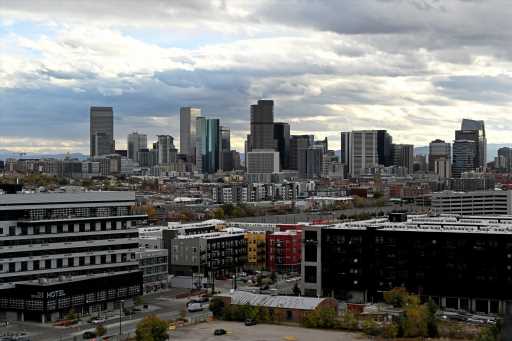Colorado employers reported adding 17,700 nonfarm payroll jobs from September to October, continuing a three-month streak of over-the-top hiring, according to a survey of business establishments.
But a separate survey of households found that 5,000 fewer people described themselves as employed last month and the number who said they were unemployed and actively looking for work rose by 6,800 to 116,400. That was enough to push the state’s seasonally-adjusted unemployment rate up from 3.4% in September to 3.6% in October, still under the U.S. rate of 3.7%.
“While this divergence between the two series can make it difficult to interpret the path of the Colorado market, the establishment survey has a larger sample and is more reliable,” Ryan Gedney, senior economist with the Colorado Department of Labor and Employment, said during a press call Friday morning.
Gedney said most months the two surveys line up, but about 14% of the time since the 1990s they have diverged. That usually happens when households report increasing employment while businesses say they had cut payrolls.
Broomfield economist Gary Horvath sides with the household survey based on what he is seeing on the street. Restaurants aren’t as full, retail spending is trending down and holiday hiring is not as strong as last year. Mortgage lenders and real estate firms are letting go of workers as higher interest rates weigh on the housing market. Homebuilders are pulling back hard and developers are anxious about finding the financing they need to bring projects to market, which should impact construction hiring. And business leader confidence is solidly pessimistic.
“This long, strange trip has successfully moved past the election but faces international turmoil, labor shortages, and high inflation. Inflation appears to have peaked in some areas; however, prices will be at an elevated level longer than desired and will push the economy into a shallow recession in 2023,” Horvath said in an email.
Steven Byers, a senior economist with the Common Sense Institute in Denver, describes the divergence as paradoxical. Hiring wasn’t tepid, so why did more people say they were unemployed?
“This may have an explanation such as people holding down more than one job or this will be corrected as the numbers are revised,” he said in an analysis of Friday’s report. One reason people may be taking on second jobs is to cope with inflation at a 40-year high.
Hiring estimates for September were also revised higher by 600, bringing the total for the month to 5,600. Over the past three months, employers report adding 38,000 nonfarm jobs, nearly triple the number they added from May to July, Gedney said. An acceleration of hiring is not usually associated with an economy heading into a recession.
Over the month, professional and business services added 5,900 jobs; construction added 2,600; and trade, transportation and utilities added 2,000 workers on a seasonally adjusted basis. Gains in educational and health services, manufacturing and other services ranged from 1,100 to 1,400. No industries had significant month-over-month declines,
Adding to the mystery, the Colorado Secretary of State reported a 10.6% increase in new business filings between the second and third quarters, a season when new filings usually fall or go flat. While October is outside that range, business formations have been very strong the past 18 months, Gedney said. Those matter because the household survey captures those who are employed by someone else or self-employed, while the establishment survey only tracks those who take a job.
Colorado has the second highest rate of any state for its share of the adult population either working or looking for working — 66.9% compared to 62.2% for the U.S. That makes it much less likely to see a flood of people coming off the sidelines to work, which is another thing that could have boosted unemployment despite strong hiring.
Source: Read Full Article
-
Adidas Withdraws Opposition to Black Lives Matter Trademark
-
Save for a Down Payment and Retirement, All at Once? It’s Tricky.
-
Indian crypto exchanges stay put in business after ‘a year to forget’
-
Rapper Theophilus London Reported Missing By Family Months After Disappearing
-
India may be the top FPI destination once US Fed pauses rate hike: Analysts

